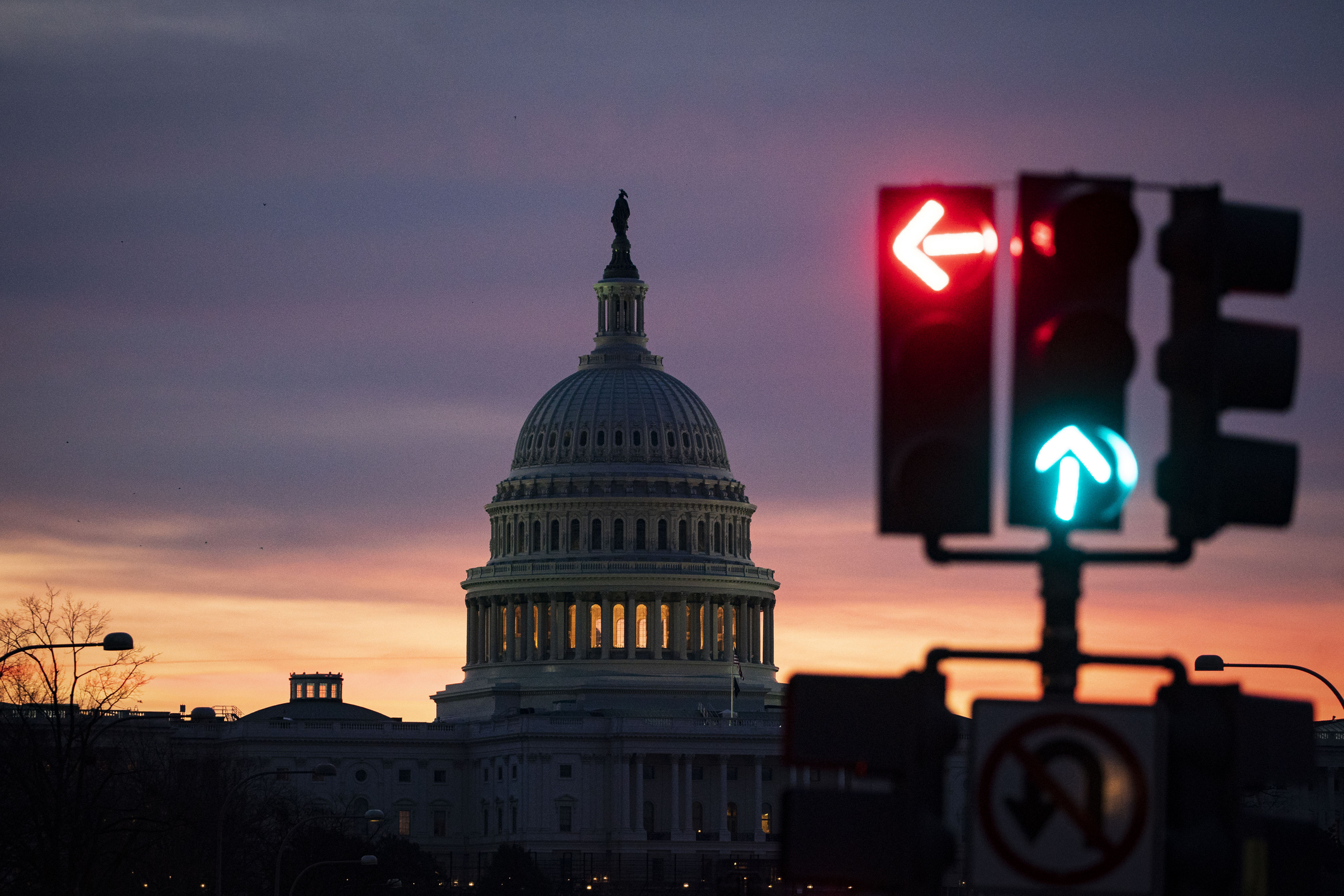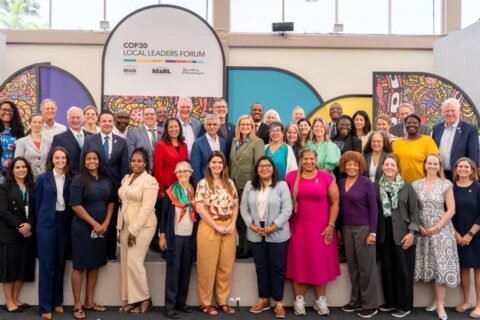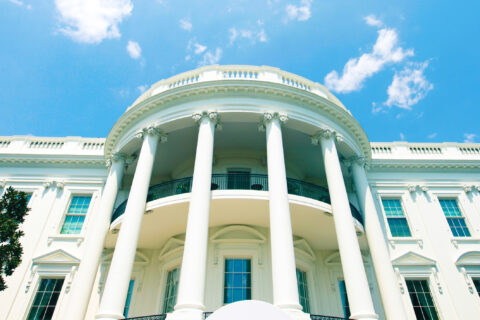Co-authored by NLC intern Jalen Meier
America’s communities stepped up when new transportation funding arrived with the Infrastructure and Jobs Act (IIJA) that Congress passed in 2021, and now more than 1,500+ transportation projects worth $22 billion are being led by local governments, including shared projects with metropolitan planning organizations, transit and rail agencies, states and many others.
As the expiration of IIJA programs nears, Congress is negotiating what the next federal transportation bill will look like. It’s critical for local governments to connect with their Members of Congress before May 30 on local transportation progress, plus their community needs. For every community that has transportation funding from IIJA or wants to see future federal investment, now is the right time to share your vision for transportation projects that will continue to transform the economic potential of your area.
Congress Gets Ready to Renew Federal Transportation Programs
To ensure that they have time for their bill debate process, Congress kicked off their reauthorization process early in the House to renew the federal surface transportation programs, and there are several key milestones along the way to a final bill being passed in the House, Senate and conferenced into a final bill for a vote on both sides.
This May each Member of Congress will be able to submit their priorities for transportation to the relevant Committee’s portal for ideas. These submissions will inform a Member-driven bill product developed by the Committee this summer. Each member can submit as many priorities as they would like, so be sure to ask and confirm that they will submit your requests to the portal. NLC has submitted transportation priorities to the House Transportation and Infrastructure Committee (PDF) that you can also share with Congress and their staff directly to ask for their support or you can request a meeting with Congress here.
This January, NLC’s Transportation Committee Chair, Vanessa Fuentes, Mayor Pro Tem of Austin, Texas, was invited to testify before the first meeting of the House Transportation and Infrastructure Committee.
In her testimony, Mayor Pro Tem Fuentes shared five key messages for Congress to keep in mind as they reauthorize:
1. Local Governments are a Substantial Partner in Federal IIJA Programs and Our Infrastructure Projects are Moving Forward
With Congress’ support, more than 72,000 infrastructure projects are moving forward — including 1,500+ core transportation projects led directly by cities and towns building the safety of our transportation networks, supporting jobs and growing economic development.
2. Infrastructure’s Clear Return-On-Investment (ROI) Matters to Our Economy
While the 119th Congress will make many national budget decisions, reducing infrastructure investment from IIJA levels would be a $1 trillion dollar economic mistake according to the latest economic analysis.
3. Congress Should Keep the Infrastructure Momentum of IIJA
Cities and towns urge Congress to embrace the positive economic impact of keeping infrastructure funding at IIJA’s levels as the Committee negotiates the goals of the next package. This is the level of funding the American economy requires and the American people deserve.
4. Collaborate with Local Governments and Regions for Results
As we renew our infrastructure investment, NLC urges Congress to prioritize continued infrastructure collaboration with America’s cities, towns and villages through direct and regional programs that are positioned to push for performance in transportation for Americans’ daily trips and freight movement.
5. Double-Down on Safety to Save Lives
Every Congressional district deserves a safe network and direct investment, and America’s local governments continue to urge Congress to double down on safety and ensure we are protecting our most valuable economic generator — our people.
However, Congressional leaders in both the House and Senate have expressed different views on how large the bill will be, what types of infrastructure it would include, and what their priorities look like. Some Congressional watchers believe the upcoming bill may look more like a MAP-21 — known for streamlining programs and a shorter time horizon — than IIJA which included many new programs and types of infrastructure investment that cities could access. This means that Congress may be leaning toward scaling back on funding and programs that cities benefited from directly in IIJA. However, every Member of Congress wants to hear this May from their District’s local leaders about programs that can take care of transportation projects in their area, so your conversations and information from the District may make the difference on what is included or cut from the next transportation bill.
Important Federal Transportation Programs for Local Governments
The nation’s transportation programs are updated over many years with each Congress amending the various programs, formulas for funding distribution and expectations in each bill. Notably, the IIJA had many new grant programs for local and regional governments to apply to that complemented formula programs going to states to fix highways and bridges or going to transit agencies for their systems. Here is a brief summary of some of the key transportation programs for municipalities and how they can help your area:
- The Safe Streets and Roads for All (SS4A) grant program has provided 2.9 billion in Federal dollars to 1,600 communities of all sizes in all 50 States to promote the planning and delivery of transportation projects to save lives on the nation’s roads in communities large and very small.
- The Surface Transportation Block Grant (STBG) is the most flexible formula program, provides Transportation Alternatives (e.g. bike, pedestrian) funding and allocates 55% of funding based on the population of regions.
- The Railroad Crossing Elimination (RCE) grant program addresses highway-rail project development and deployment to unblock crossings and keep people and freight moving.
- The Better Utilizing Investments to Leverage Development (BUILD, previously called RAISE and TIGER) grant program provides grants for surface transportation infrastructure projects with significant local or regional impact with wide eligibility.
- The Promoting Resilient Operations for Transformative, Efficient, and Cost-saving Transportation (PROTECT) grant program provides funding to highway, transit and certain port projects that focus on the resilience of surface transportation infrastructure from impacts of water and weather events.
Take Action
- Join NLC on May 9 to discuss our local transportation priorities and how to share them with Congress.
- Download (PDF) a copy of NLC’s House transportation priorities.
- Request a meeting on transportation priorities with your Members of Congress using NLC’s form.
- Host a local meeting or event with Congress and your community on infrastructure.
Share Your Project
Share your top priority infrastructure project with us!





